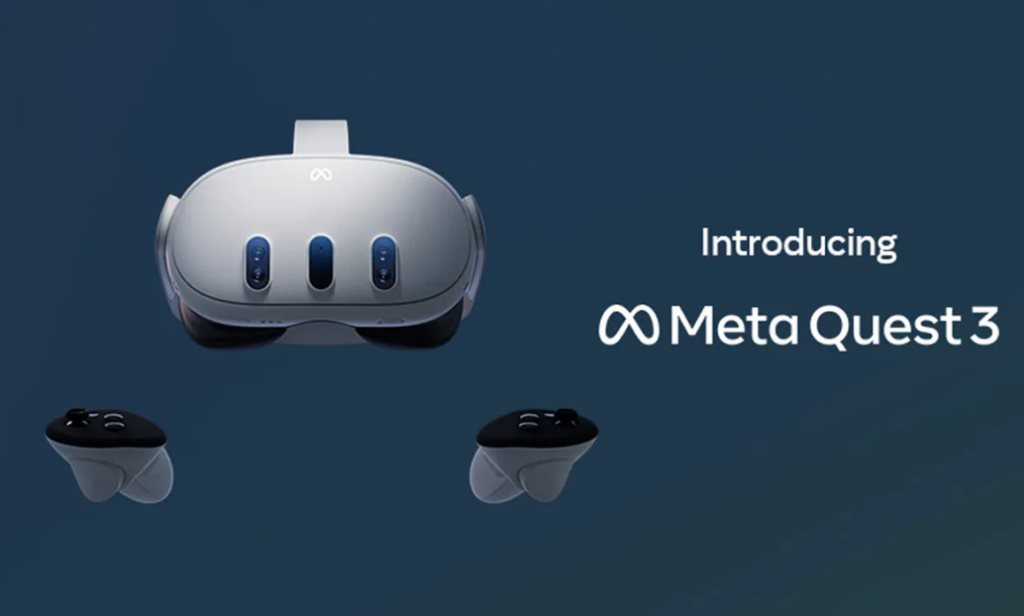
In the ever-evolving world of gaming, the boundaries between reality and the virtual realm continue to blur. As technology progresses at an unprecedented pace, so does the potential for immersive experiences. One such groundbreaking development is Meta Quest 3, a revolutionary gaming platform that takes players on an unparalleled journey through virtual worlds. In this article, we will delve into the features, advancements, and impact of Meta Quest 3, as it pushes the boundaries of what we thought was possible in gaming. Meta Quest 3 harnesses the power of virtual reality (VR) to transport players into fully immersive environments. Building upon the success of its predecessors, this gaming platform offers an unparalleled level of realism and interactivity. Through advanced headsets, players can see, hear, and even touch the virtual world, blurring the lines between imagination and reality.
Meta Quest has launched its latest mixed reality headset, the Meta Quest 3, promising significant improvements over its predecessor, the Meta Quest 2. The device is equipped with an upgraded Snapdragon chipset, which is likely the Snapdragon XR3, delivering more than double the graphical performance compared to the previous generation. This upgrade ensures enhanced visuals and a more immersive gaming experience for users.
The Meta Quest 3 introduces redesigned Touch Plus controllers that eliminate the need for outer tracking rings. These controllers also incorporate TruTouch haptics, a feature previously found on the Meta Quest Touch Pro controllers. The headset supports hand tracking by default and offers Direct Touch support. Users can also purchase these redesigned controllers separately and use them with the Quest 3 headset.
One notable improvement in the Quest 3 is its thinner optic profile, which is approximately 40% thinner than the Quest 2 (excluding the foam facial interface). The front of the device houses sensors, although it does not support advanced face-tracking capabilities. Despite these changes, the Quest 3 remains compatible with Meta’s extensive library of games, including the 500 VR apps and games available for the Quest 2 and Quest Pro.
In addition to the Quest 3, Meta has revealed that a forthcoming software update will enhance the CPU and GPU performance of both the Quest 2 and Quest Pro headsets. These updates will also introduce dynamic resolution scaling support, allowing for higher pixel density without compromising frame rates. Meta plans to offer the Quest 2 and Quest Pro alongside the upcoming Quest 3 headset.
While the immersive gameplay is a major highlight of Meta Quest 3, the platform also emphasizes social interaction. Through built-in chat systems, voice commands, and multiplayer capabilities, players can connect and engage with others in real-time. Whether it’s collaborating with friends to solve puzzles or battling against opponents in competitive arenas, the social aspect adds a new layer of excitement and camaraderie to the gaming experience. Meta Quest 3 breaks down barriers, enabling players from different parts of the world to connect and forge lasting friendships within virtual environments.
The Meta Quest 3 will be available in a 128GB model, priced at $499.99, and is set to be released in the autumn season. Meta has also announced a price reduction for the current-generation Quest 2 headset, bringing its retail price back to $299.99. This adjustment comes after the headset’s price was increased by $100 in July 2022.
More information about pre-orders and sale dates for the Quest 3 will be announced during Meta’s annual Meta Conference, which is scheduled to commence on September 27th. The Quest 3 aims to provide users with an upgraded mixed reality experience, further expanding the possibilities of virtual reality gaming and content consumption.



